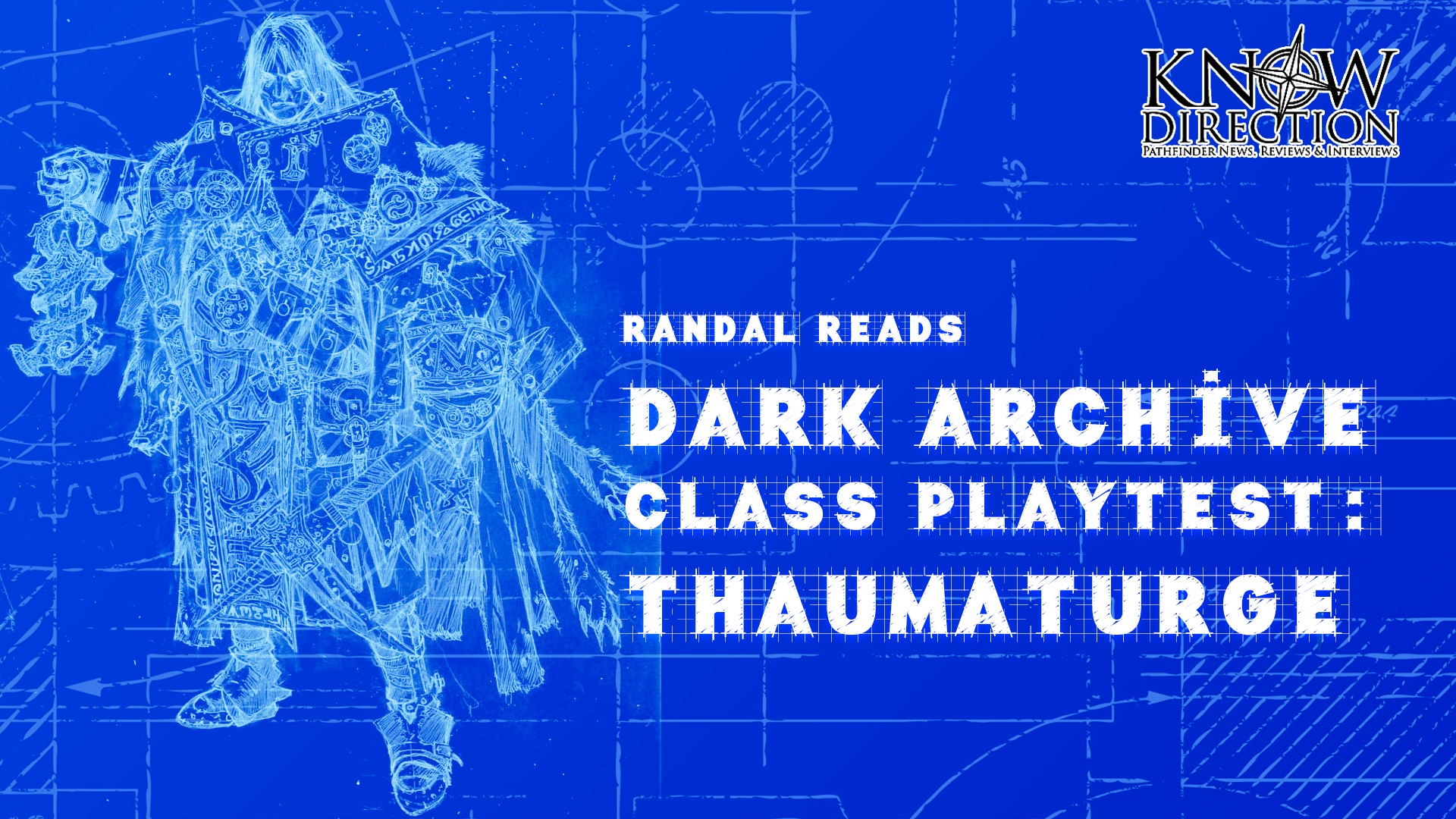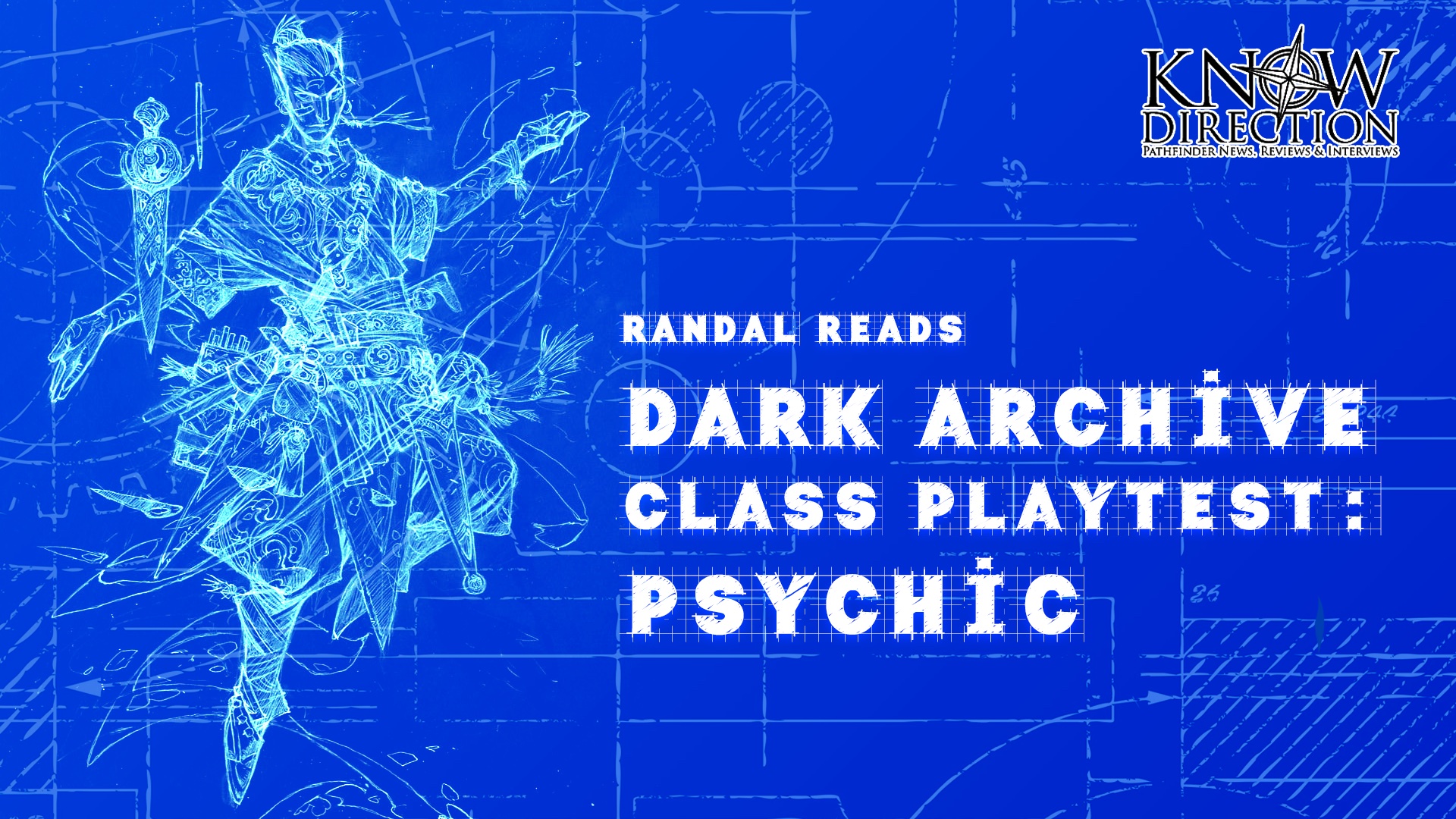Publisher: Paizo Publishing
3.5 SURVIVES THRIVES!Expectations
What can I expect from a new and improved but reverse compatible version of my favourite role-playing game? I want the world but don’t want to hope for it. In effect, my expectations can not be articulated.
At a Glance
Initially I was disappointed that Paizo went with full page art instead of stylized borders. The covers of Paizo’s other Pathfinder lines –Pathfinder Chronicles, Pathfinder Companions, Pathfinder Modules, and the Pathfinder Adventure Paths- are tied together by distinct borders that make the artwork pop. No sourcebook comes to mind before the Pathfinder RPG line was launched with the Pathfinder Bonus Bestiary that had full page art on its cover. That may be the point Paizo was making, but is it a valid point?
The style of cover, with the Pathfinder RPG banner across the top and the title towards the bottom, does evoke a familiar image, just not familiar to RPG sourcebooks. The cover is reminiscent of a comic book, with an action scene that speculates on the adventures contained within. Whereas readers would open a comic to find the fates of Valeros, Seoni, and the red dragon, opening the Pathfinder RPG Core Rulebook invites us to decide their fates ourselves.
Wayne Reynolds’ piece is good, but the game has only been out a few months and I’m already tired of it. I don’t fault Paizo for not mimicking the ancient tome style of the 3.5 Player’s Handbook or Dungeon Master’s Guide, but finding a similarly generic idea that gets the point across would have more staying power.
The layout and page borders set a mood for medieval fantasy. A nice weathered brown and Celtic floral pattern. The borders are slightly different from the Bonus Bestiary before it and the Bestiary after, so expect this design to continue to evolve.
There is a lot of great art in this book, but a few stand out either as spectacular pieces or really capturing a fantasy RPG scene. The duel between Merisiel the iconic rogue and a grinning ship captain on page 92 lays to rest any arguments that the climb skill is boring. Both cling to ropes and brace against the mast of a ship being scuttled by a giant sea creature’s tentacles. Any mortal in such a situation would accept their fate and make amends with their god, but a fantasy hero and villain merely exchange confident looks and wait for an opening to strike.
One page 321, amidst the planar spells, there is a beautiful piece of magic that contrasts near darkness with a vibrant arcane purple. A caster, obscured by rings of smoke, floats just off the ground, her arms extended skyward. Surrounding her is a gargantuan cobra (a Xacarba, I’m told, but it is not in the Bestiary) creature with multiple necks, sets of fangs, and eyes, and with a fiery glow from its mouth. This big snake isn’t poised to attack the caster, it’s recoiling, as if from fear or intimidation, a nice visual for how a summoned creature might feel towards its temporary master.
Final art of note is on page 416 in the trap section. Paizo is known for its redesign of goblins into mischievous and unsympathetic little buggers with laughable but evil antics. Despite this, there is nothing but pity for the desperate goblin seen dissolving in a green slime trap. The little guy doesn’t stand a chance.
Highlights
Familiar System, New Outlook
Many 4e converts ask 3.5 loyalists how they can claim to love their preferred system while giddily converting to the Pathfinder Roleplaying Game. Put simply, we acknowledge that 3.5 had problems that grew with every new sourcebook release, but 3.5 functioned in such a way that we connected with. For most of us, 4e failed to make that connection. And again for most of us, Pathfinder succeeded.
Pathfinder is so very 3.5. It without a doubt succeeded at its goal for reverse compatibility, with all the rules changes between this Core Rulebook and the 3.5 core rulebooks summarized in a free Conversion Guide. Although they do not list every detail, the broad strokes are covered in just 18 pages.
The base classes have evolved, combat maneuvers are unified, how certain feats and spells work is different, but all these changes are based on experience, and despite all these changes, the game is still recognizable.
Everything a Player Needs and More
In my review of the Dungeon Master’s Guide, I criticized it for containing material like prestige classes and magic items, which I felt belonged in the Player’s Handbook. The Core Rulebook is a reflection of what I wanted from the PH.
Granted, there is more than just what a player needs in the Core Rulebook, like information on traps, poison, and GMing (note the G). This was necessary by design as this isn’t the Pathfinder Player’s Handbook. At least a new player can find all the core options available to his character without having to borrow the GM’s forbidden blue book.
Easy on the Eyes Formats
There were options in 3.5’s core rulebooks –the DMG specifically- that felt undigested. A lot of rules did not jive together in an easily referenced manner. The format for magic items, for instance. A lot of information was cobbled together in a run on sentence at the end of each entry, and some useful information was missing. Curses, diseases, and poisons were hard to manage because they required so much cross-referencing.
The Core Rulebook updates the formats of spells, magic items, and afflictions, making them all easy to manage. Even the idea of alignments being steps apart has been graphed in a way that facilitates understanding. The format for spells is a step back from the later 3.5 format that the Spell Compendium introduced, but still an improvement over the original 3.5 format.
Low Points
Unlearn What You Have Learned
You know how a rogue can’t sneak attack undead? You know nothing! At least that’s how it can feel playing the Pathfinder RPG.
There are a plethora of nuanced changes so subtle, an experienced 3.5 player may play the Pathfinder RPG completely wrong for years and never come face to face with his mistaken presumptions. Even the Conversion Guide does not outline every change, instead advising that players and Game Masters reference the rules before using a familiar spell or feat. This will mean that the first few games using the PFRPG will progress more slowly than 3.5 veterans are used to. There is both good and bad in that.
More Expensive Entry Fee
3.5 players needed to buy one thirty-odd dollar book to get the rules they needed to play (minus the player-centric information locked in the DMG). The DM needed an extra couple of books. Now a player still needs one book, but it is twice the size and nearly twice the price.
I know I can pick up a $50 RPG Core Rulebook in one hand and a $50 video game in the other and see why the former is a better value than the latter, but will a new player see the same thing?
Opened a Can of Worms
The year long playtest that helped finalize the Pathfinder RPG core rules and served to establish Paizo as the inheritor of the 3.5 kingdom meant every player had a forum to express themselves. Sadly, it also meant every player had to face rejection. The Pathfinder RPG is a culmination of half a million gamers’ experience, but it is not perfectly attuned to any one gamer. Furthermore, the playtest made moding the system a mainstream concept. There is value in the revelation that a gaming group can change any rules that do not satisfy them, but there is a loss of community if every group tweaks the system to serve their individual whims. Eventually this could lead to a fracturing of our common knowledge, like thousands of slowly forming dialects breaking down communication.
Fortunately, one of Paizo’s strengths is its connection with the community. But has this solved the problem or simply slowed it?
Juicy Bits
So very much. .
The new Cleave (pg 119) is still the feat for fighting groups but has been modified to be more functional.
Dragonhide (pg 154) does more of what players expect it to as material for armour.
In addition to the revolutionary new rules for combat maneuvers, Paizo found room to outline specific scenarios, like bullrushing multiple foes (pg 199).
Breath of Life (pg 251) is a new healing spell that serves the same purpose as the indispensable but non-OGL revivify.
The rules for cost of living (pg 405) make managing a character’s life outside of adventuring easy and logical.
If 3.5’s “they work the same” take on casting spells of the fire subtype underwater bugged you, pg 432 is your cure.
The 7 Step NPC Creation on pages 450-454 not only makes a GM’s life easier, it provides insight for players into how the designers expect characters to be built. Who knew that a melee-oriented character should choose Wisdom as its fourth highest stat but a range-oriented character should choose Intelligence?
Finally, rare for the juicy bits, something that is thankfully not in the sourcebook: The Pathfinder RPG Core Rulebook is setting neutral. Golarion, the setting of Paizo’s other Pathfinder lines, may not even be mentioned once, and the book certainly does not assume all games will be set there. Nothing against Golarion, but there is enough material covering that setting, it did not need to be included in the Core Rulebook.
Personal Experience
I’m playing in a 3.5/PFRG hybrid (which I saw called a 3.P game, my preferred nickname for it so far) and GMing a pure Pathfinder game. I also made several PFRPG pregen characters for a convention one shot. So far, pure Pathfinder is my favourite incarnation of 3.5.
Overall
If you have all the 3.5 books you feel you need and have made your peace with grapple and dead levels, you don’t need Pathfinder. However, if you are ready for a change but nothing too drastic, Pathfinder is a tune up comparable to the switch from 3rd to 3.5. Also, if you have any interest in buying new books for your 3.5 game, your two big options are used old releases or new Pathfinder releases. Even third party publications are quickly converting to Pathfinder. With a great company like Paizo releasing a strong product like the Pathfinder RPG, 3.5 loyalists can enjoy their game for years to come.
If You Liked This Book…
Check out almost any of Paizo’s other releases.
Date Released: August 2009
Date Reviewed: November 2009



Leave a Reply